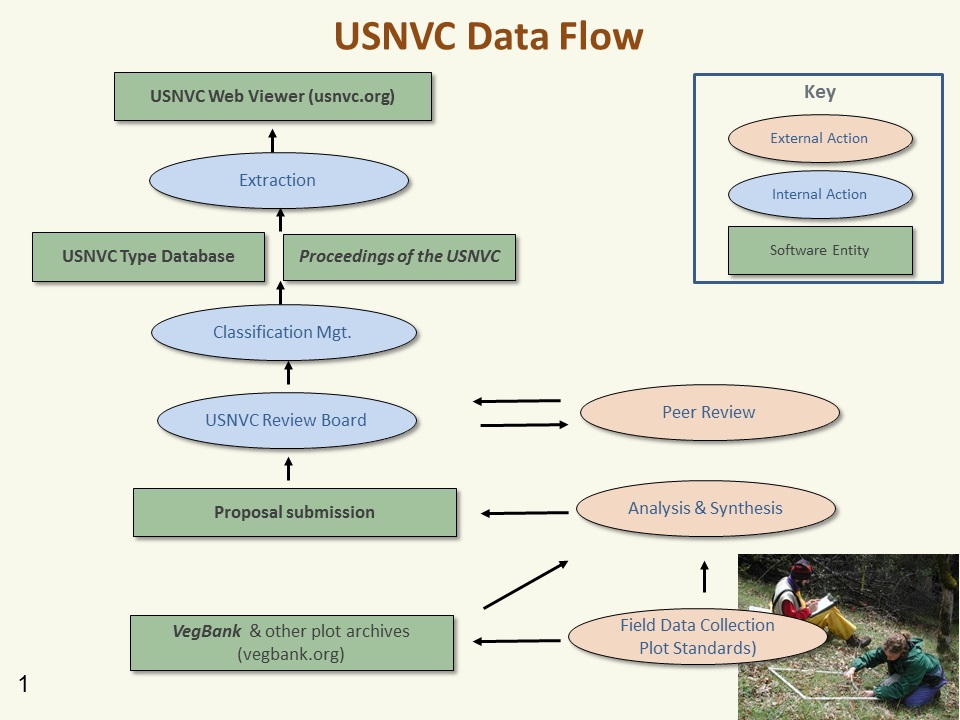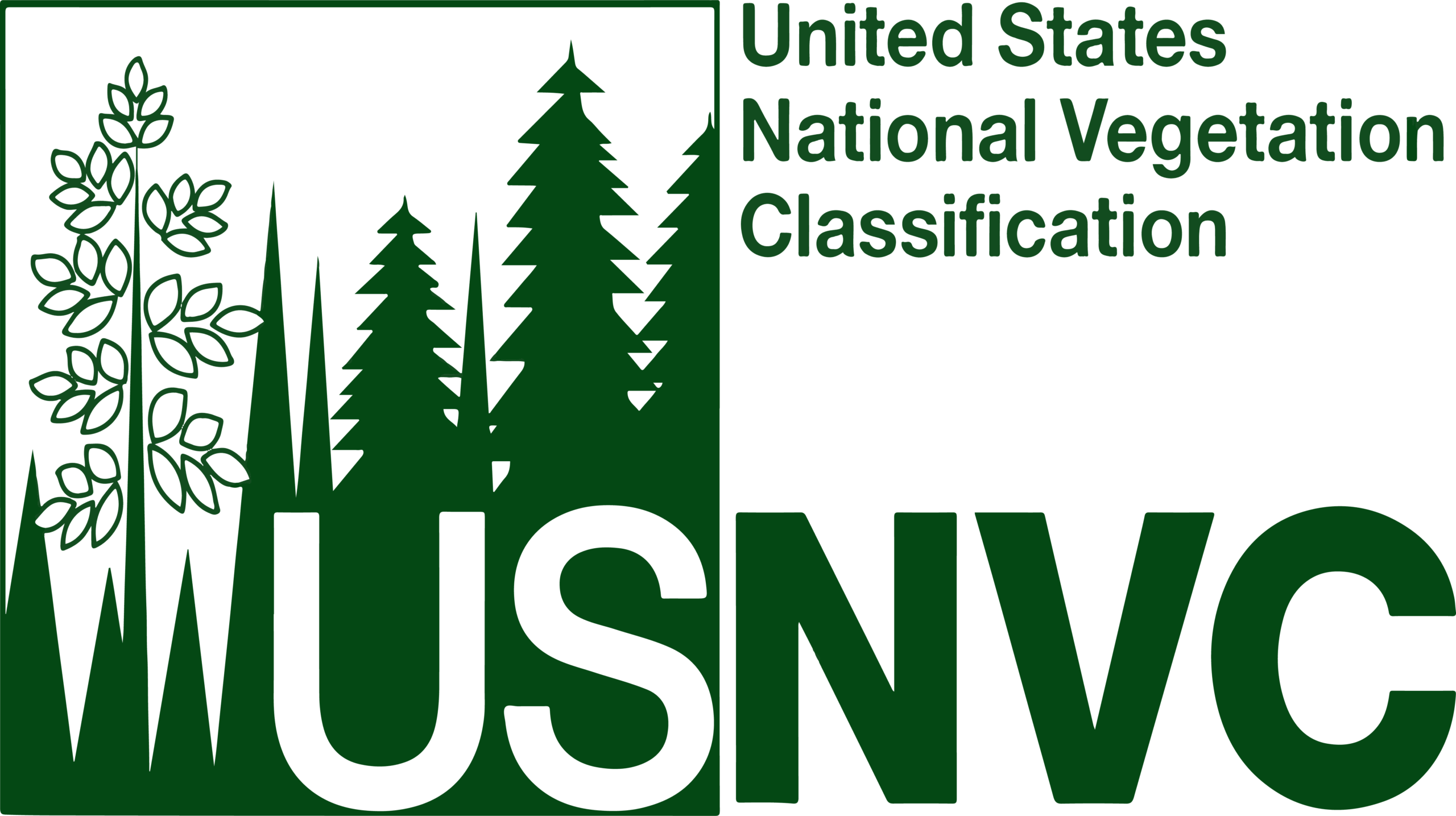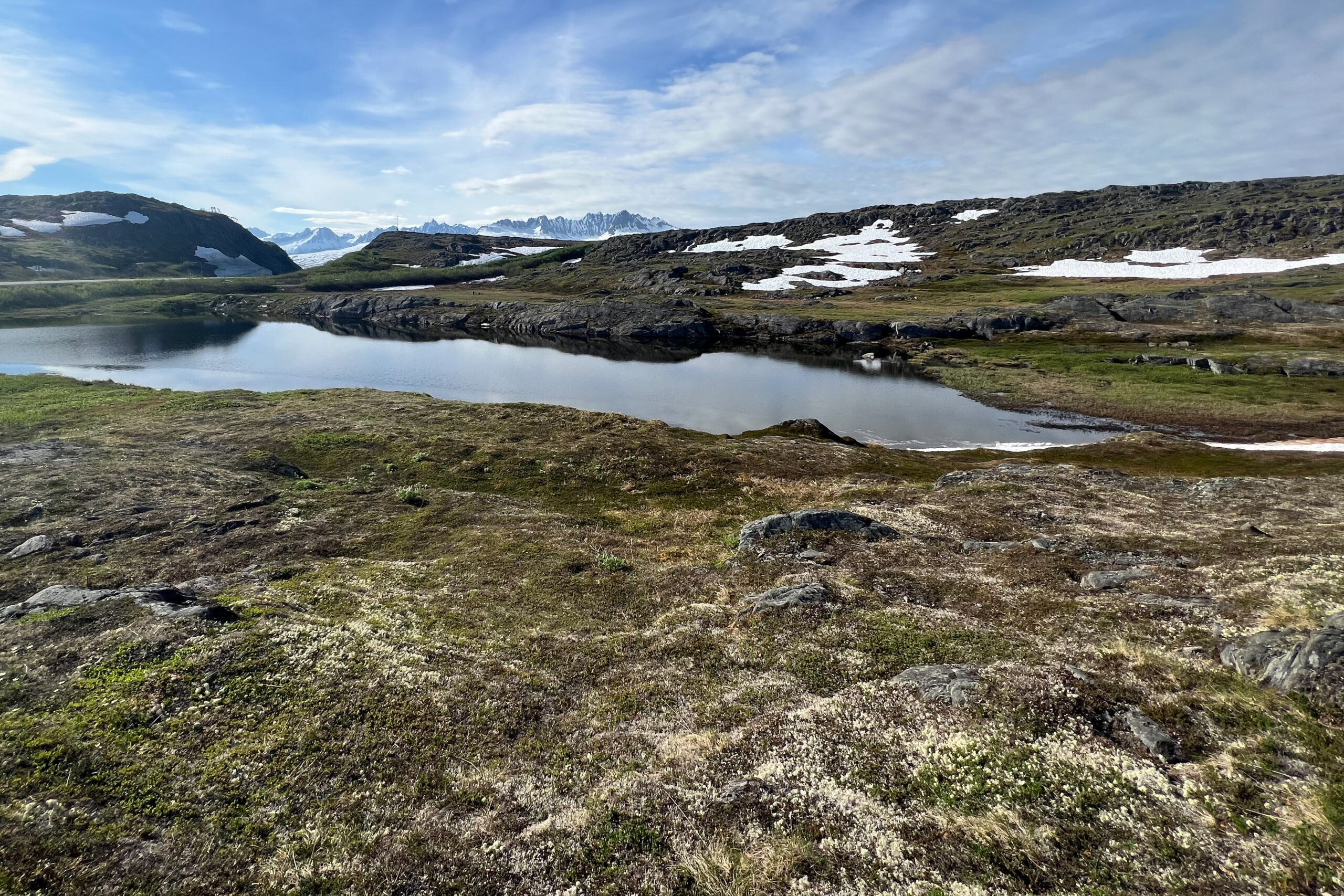The USNVC is a dynamic classification, supported by a data standard that provides the basis for considering, evaluating, and acting on proposals for new types and additional changes to the hierarchy.
Proposing changes to the USNVC
The process for managing the USNVC includes a peer review process and open access for anyone interested in submitting a proposal for consideration. The goal of the submissions process is to help maintain an authoritative and comprehensive description and classification of the nation’s ecosystems.

The Proceedings of the USNVC
At all times, a definitive, current list of types is available. As revisions to hierarchy are made and new descriptions are drafted, the new information will be posted on this web site. The ESA Vegetation Panel manages the formal review at each level of the classification. If you are interested in participating in the review process, please contact the USNVC Editor in Chief.
Scope of Submissions
Revision Articles are encouraged that are plot-based, field tested, ecologically interpreted, provide range-wide perspective on vegetation types, and clearly delimit the concepts with respect to existing published concepts in the USNVC. Authors are not prevented from submitting closely related publications to other journals, where the focus is typically on broad readership, and where the details of the classification concepts are often not publishable. Authors should alert the Editors to such joint submissions.
Submission Types
- Editorial Notes will be relatively short, editorial improvements to existing type concepts in the USNVC. They improve, without substantively changing, existing concepts. They may include spelling/grammar edits, species taxonomic edits, minor range edits, improvements to vegetation, environment or dynamics content, etc. A log of such Notes, including authors, will be published annually in the USNVC Proceedings. Such changes are typically handled directly by the NVC Review Board.
- Revision Articles published in USNVC Proceedings seek to either substantially revise existing type concepts or propose new type concepts. These may include substantial range changes (especially if such changes affect other concepts of the hierarchy), biotic or abiotic changes that narrow or enlarge the concept, inclusion of plot data or reanalysis of plot data to support the concept, and changes in confidence level. Articles are similar to journal articles, but require use of a standard USNVC type description template. Such changes require a peer review process administered by the NVC Review Board.
- Methods, Data, and Best Practices papers published in USNVC Proceedings will cover topics related to the practice of ecological vegetation classification for the USNVC (such as sampling methods, data gaps, or best practices when analyzing data) but are not directly concerned with editing or revising specific vegetation type concepts. Submissions require a peer review process administered by the NVC Review Board.

